Well in the water - what you need to know for its device
For those who are going to organize the water supply of a country or a country house, this raises a lot of questions concerning the documentation of the well, the choice of a place for it, the opportunity to save on its design and equipment. Sometimes a well is made for water for two owners, which is economically advantageous, but requires confidence that there is enough water for everyone.
Who can answer these questions and guarantee that money and efforts will not be wasted?
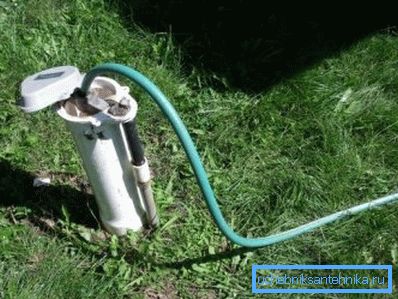
Preliminary events
The main task of the well is to provide you with the necessary amount of water, which should be enough for cooking, for household needs, and for irrigation.. Therefore, the first thing you need to decide on their needs. After which you can proceed to specific actions.
Location selection
How to determine the place where the water well is guaranteed to give the required volume? How deep are the aquifers? These questions can be answered by drilling an exploratory well. But it is expensive and does not always give the result on the first attempt.

The presence of well-functioning artificial sources from neighbors also does not guarantee that you will have plenty of water.
The most reliable way is to contact an organization that has an inventory of wells for water. This is a summary of all existing wells and their characteristics, including, besides the location, diameter, depth and debit.
Cadastres are different:
- The State Water Cadastre contains information on all water bodies of the country, including artesian wells;
- Regional inventories contain data on water bodies of specific regions. Each object is assigned an individual number;
Note! If your goal is a shallow well under water to the first aquifer in the sandy layer, the listed inventories will not help you - they only contain information about wells drilled to the second aquifer and below.
- Private inventories created by specialized drilling enterprises contain information about all the wells drilled by them, regardless of their type. They can not be found in the public domain, such information is provided only to customers.
Council If you are not going to engage in complex drilling with your own hands, it is worthwhile to entrust it not to private owners, but to professionals who have data on the depth of the aquifers in your area. They guarantee the receipt of water in the volume you need and are responsible for the quality of work. But the price per meter of drilling is higher.
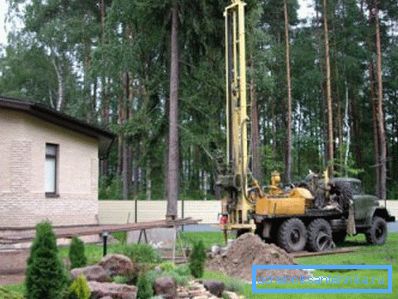
Obtaining a license
By law, to use valuable natural resources, which include groundwater, you must have a license to extract them. It is better to get it immediately, otherwise then you will have to not only decide how to legitimize the well on the water, but also pay a fine.
To obtain a license, you will need to perform the following steps:
- Make a calculation of the balance of water consumption and harmonize it;
- Conduct geophysical surveys;
- Draft well;
- Get a conclusion SES, etc.
When the work is completed, a passport is compiled, which indicates the type, design, depth, performance, diameter of the water well and other characteristics. The license is issued after the approval of all documents and registration of the act of acceptance of the well into operation.

Note. Only artesian wells that feed on water from deep calcareous layers are subject to licensing. Sand can be drilled without any documents.
Device and operation
It is unlikely that someone will take on their own to drill even domestic wells into the water, risking not to get to the water at all or to break the technology, as a result of which its extraction will be impossible. In addition, such work requires special equipment and experience. And, taking into account all the above, it becomes clear that it is simpler, and more often it is cheaper to fully rely on professionals.
Drilling
The contractor will undertake the following work:
- Conducting geophysical studies and inventory analysis to determine the type of soil, finding the aquifer and its thickness;
- Delivery of drilling equipment, casing and other materials to the site;
- Selection of the design and technical parameters of the well, capable of providing the required amount of water;
- Direct drilling with installation of upsetting pipes, filters;

- Flushing, swinging and bringing to the well mode.
Well Construction
Without special equipment it is impossible to extract water from a well. If you want to connect an in-house water supply system to the water source, the task will become more complicated.
For trouble-free well operation, this equipment needs to be properly selected and connected.
First of all it concerns the pump, the choice of which depends on such factors as:
- The water level in the well and the height to which it is required to raise;
- Remote source from input to the house;
- Well parameters;
- Her average debit;
- Composition of pumped water, etc.
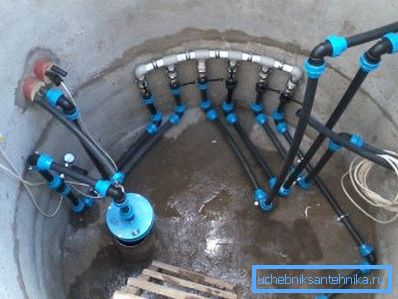
Even if you have clear instructions for setting up a well and including it in the water supply system, you can miss some minor detail and make a mistake that will lead to the breakdown of expensive equipment. Conclusion: the creation of a water supply project and its implementation should be handled by specialists.
Exploitation
If everything was done correctly, problems with operation should not arise. But it is necessary to periodically audit the well and the equipment installed in it, prevent dirt from entering the column, replace filters if necessary, and prevent the pumping station from freezing.
But there are unexpected problems. For example, a new well produces little water.
The reasons for this may be several:
- The construction was carried out in violation of the technology of drilling or the well filter is not reaching the water carrier;
- The filter is clogged with clay or rock particles that make up the aquifer (kolmat);
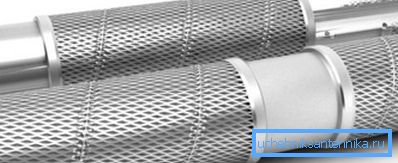
- The pump is not powerful enough and can not cope with the rise of water (or worn);
- Water pipes clogged or froze.
All these defects can be fixed. But if the aquifer is mined or heavily depleted, another well will have to be drilled.
Another possible problem is water pollution. This can occur due to improper operation, in which case the well is reorganized and water is disinfected.
If the aquifer itself is contaminated because of its pollution by industrial waste dumped in a river or on the soil, such water cannot be drunk. It is regrettable, but you have to think about how to drown the well in the water. To do this, pour a cement mortar or a special technical fluid into it.
If the well is used only in the warm season (for example, at the cottage), it is preserved for the winter by pumping water from the supply system and insulating the caisson.
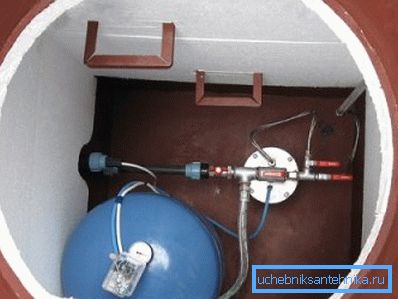
Owners of artesian wells, which are the source of a valuable natural resource, in the process of its operation will have to follow certain mandatory rules.
This is the so-called water well monitoring, which includes:
- Protection of the adjacent territory from pollution, prevention of the device near the well of roads, parking lots, landfills, sheds, etc .;
- Regular water analysis with preservation of the results;
- Keeping a log of water consumption;
- Measurement and recording of groundwater level from the surface of the earth;
- Submission to the inspection bodies of documents for the well - a project, passport, license.
Conclusion
In one article it is difficult to cover all the issues that may arise on the construction and use of wells. Therefore, we suggest you watch the video in this article and explore other materials of the site to get more information.